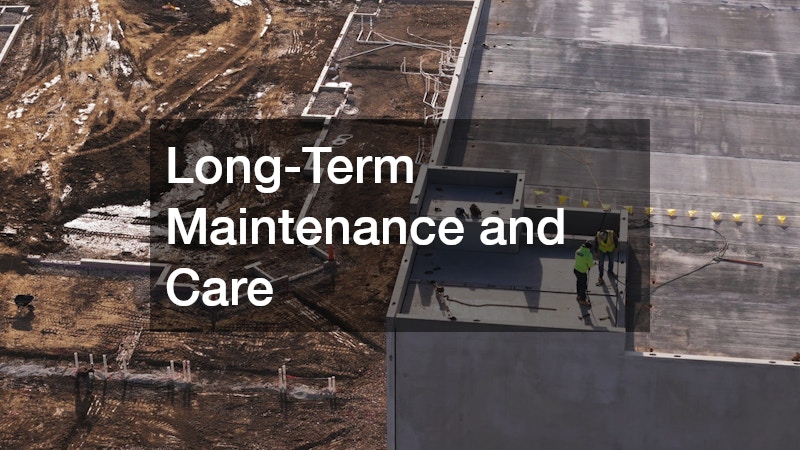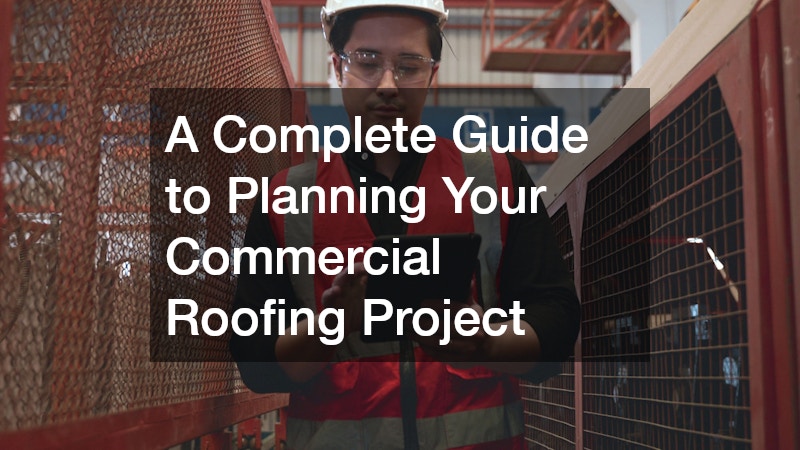A commercial roofing project is a major undertaking that directly impacts the safety, functionality, and long-term performance of your building. Whether you are repairing, replacing, or installing a new roof, understanding the key stages of the process is essential. From selecting materials to working with trusted commercial roofing contractors, every decision plays a role in ensuring durability and reliability. This guide outlines everything you need to know before starting your next roofing project.
Assessing the Condition of Your Roof
The first step in any commercial roofing project is evaluating the current state of the roof. A professional inspection helps identify problems such as leaks, cracks, standing water, or damaged membranes.
Regular assessments are important because they allow building owners to address issues early and plan necessary repairs or replacements before the situation worsens.
During the inspection, roofing experts will also examine ventilation, insulation, and drainage systems. These elements are critical for maintaining efficiency and preventing further damage. By thoroughly assessing your roof’s condition, you can determine the best course of action for your project.
Choosing the Right Roofing Materials
Commercial buildings often require specific roofing systems designed to handle unique environmental conditions and structural demands. Some of the most common materials include:
-
Single-Ply Membranes (TPO, EPDM, PVC): Known for durability, flexibility, and resistance to weather.
-
Built-Up Roofing (BUR): Multiple layers provide strength and a proven track record of performance.
-
Modified Bitumen: Offers excellent resistance to foot traffic and fluctuating temperatures.
-
Metal Roofing: Popular for its longevity, energy efficiency, and minimal maintenance needs.
Selecting the right material depends on factors such as climate, building use, and maintenance preferences. Consulting with commercial roofing contractors ensures you receive expert guidance tailored to your specific requirements.
Preparing Your Building for the Project
A commercial roofing project involves more than just replacing or repairing materials. Preparation is key to minimizing disruptions to daily operations. Building owners should coordinate with roofing professionals to establish a timeline, set expectations, and communicate potential inconveniences with staff or tenants.
Protective measures may also be required, such as covering equipment, securing sensitive areas, and designating safe zones around the project site. Clear communication between contractors and building management helps maintain safety and efficiency throughout the process.
Working With Commercial Roofing Contractors
Partnering with skilled commercial roofing contractors is one of the most important decisions in the process. These professionals bring the knowledge and expertise necessary to execute complex projects with precision. A reliable contractor will:
-
Conduct thorough inspections and provide detailed reports.
-
Offer recommendations based on your building’s unique needs.
-
Maintain compliance with building codes and industry standards.
-
Prioritize safety and quality during installation.
-
Provide warranties and ongoing support after project completion.
Taking time to research and select an experienced contractor ensures that your investment is well protected. Look for companies with strong references, proper licensing, and a proven track record of handling commercial roofing projects similar to yours.
Timeline and Project Stages
Understanding the typical stages of a roofing project helps set realistic expectations. While timelines may vary, most projects follow these general steps:
-
Initial Consultation and Inspection: The contractor evaluates your roof and discusses available options.
-
Planning and Design: Material selection, scheduling, and safety measures are finalized.
-
Preparation: The worksite is secured, and old roofing materials are removed if necessary.
-
Installation: Contractors install the new system or complete necessary repairs.
-
Final Inspection: Quality checks ensure everything meets industry standards.
-
Maintenance Plan: A strategy is provided to preserve the roof’s integrity over time.
By familiarizing yourself with these stages, you can anticipate each step and work closely with your contractor to keep the project on track.
Long-Term Maintenance and Care
The success of a commercial roofing project does not end once installation is complete. Ongoing maintenance plays a vital role in extending the lifespan of the roof and protecting the building. Simple practices like clearing debris, checking drainage systems, and scheduling regular inspections help prevent avoidable damage.
Many commercial roofing contractors also offer maintenance programs tailored to your system. These services include routine inspections and proactive repairs, ensuring your roof remains in optimal condition year after year.
A commercial roofing project requires careful planning, professional guidance, and ongoing maintenance to achieve lasting results. From assessing your current roof to selecting materials, preparing the site, and working with experienced contractors, each stage is essential for success. By following this complete guide, building owners can approach their roofing projects with confidence, knowing they are protecting one of the most important assets of their property.


